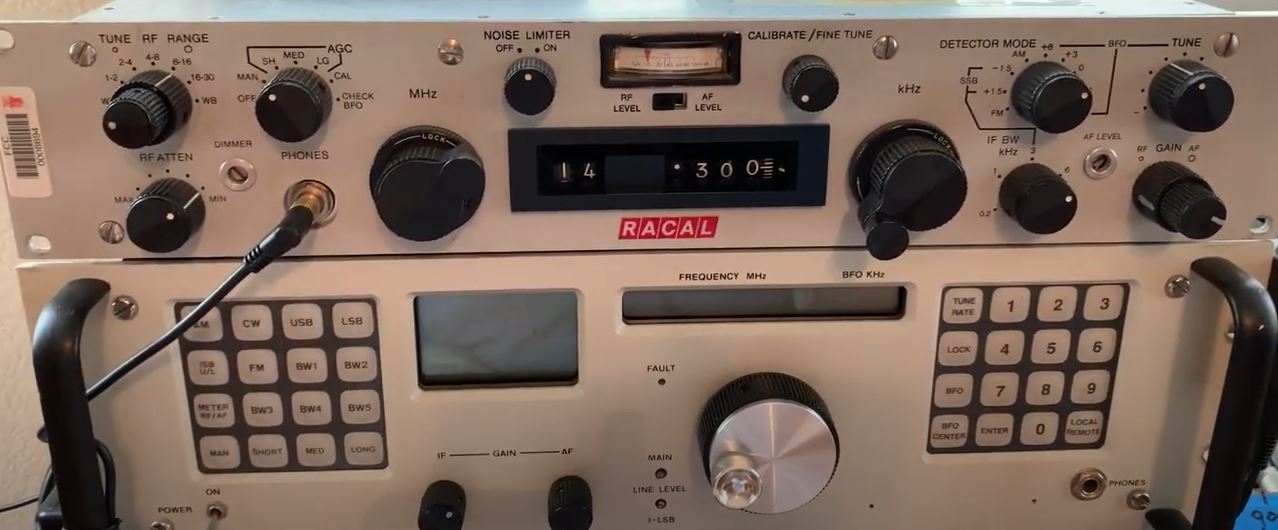 Many thanks to SWLing Post contributor, Nick Boras, who shares the following:
Many thanks to SWLing Post contributor, Nick Boras, who shares the following:
I was motivated by one of Tom Styles videos (hamrad88) about Sync detection to make one of my own. It is no secret that Tecsun offers Sync on several of their radios but only the 660 and 680 really work. My take on Sync is that the results are not consistent even on some of the highest rated Sync radios. While my video is not scientific or nearly complete, I think it gives a good representation of what we can expect from Sync for SWL.
[In addition] today was Radio Day, so I made another video on a very interesting radio:
Thought your readers might be interested.
We are indeed! Thank you for sharing these videos, Nick! That Racal, by the way, is a beautiful beast of a rig!

I have had many radios with synchronous detection. The AOR AR7030PLUS and Drake R8a only provide DSB synch detect and though they performed well, they were not as good as I expected regarding these two great receivers. The Tecsun PL-660 and Sony ICF-SW7600GR perform very well as long as signal level is above a certain threshold. They tend to produce a whistle when fading causes a signal to go up and down this threshold. The venerable Sony ICF-2010 performs much better because this threshold is much lower, but there are still signals below that its synch detect cannot lock on and it may produce some whistle. I find this feature more useful on the PL-660, SW7600GR and ICF-2010 than that of the AR7030PLUS and R8a because they are either lsb or usb instead of just dsb. The Satellit Grundig 800 and Etón E1 have by far the best synchronous detection. They lock on any signal, no matter how low it is and therefore do not produce that annoying whistle. The Etón E1 has three options: lsb, usb and dsb which you can use combined with a narrow filter and pass band tuning. And each of these modes can be very useful depending on the situation. Synchronous detection can be useful when a signal is very low and you only listen to the carrier, provided you are in a place with low background noise, specially on MW. On another situation, I tuned a Chinese shortwave station with technical problems that caused it to broadcast only on DSB (no carrier). That was easy to solve, for I used dsb synch detect which provided this signal a carrier and I could then listen to it very well. There are other situations where a station is suffering interference from adjacent ones, and if you have the three options (lsb, usb, dsb) plus a narrow filter, you will have a great chance to either attenuate or eliminate such noise. Some sdr programs also have very good synch detect such as SDR Console and SDRuno.
Nick, synch detection and DSP NR are two entirely different things. Synch works by replacing the carrier on an AM signal, Its main advantage is reduction of rapid fading and improvement of AGC performance while listening.
John this is more focused on sync as a listening enhancement not specifically as a noise reducer. At the end of the day that is what it is designed for… enhancing the listening experience or readability
Hi Nick ;
Really love your receiver works. I am the @ kipchonge 2556 who tried to make contact with via you per you AEG EB00/ Icom 7610 U-Tube video. Please respond so that explain so that I can let you what’s on my mind.
Thanks in advance
Thanks for the mention.
Tom Stiles
Thanks for this — not many videos out there on the 6217 and it’s a
beautiful rig.
Thanks Dan. I got super lucky and caught it on ebay. I still need to figure out how to hook up the VLF converter